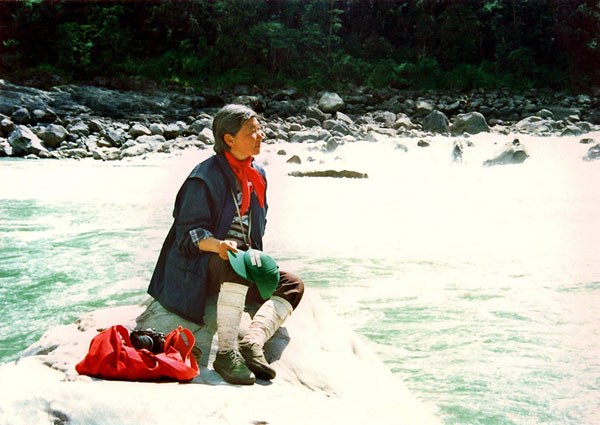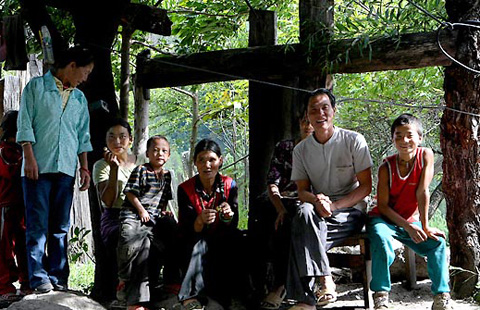

Huang Zongying, the writer and playwright who documented Xu's adventures in her 1984 book, Little Wooden House, said Xu's story is something one encounters "once in a lifetime".
On one occasion, out on expedition with the scientist, Huang saw how the skinny woman braved the cold and ignored food poisoning, bug bites and pain, focusing only on the living creatures of the forests. Huang called her "Tibet-worshipper".
 |
|
Xu Fengxiang's footprints have covered many parts of the Tibet autonomous region over the past 30 years. Provided to China Daily |
From her first visit to Tibet to her latest journey of inspection in 2009, Xu's footprints have covered 130,000 km and all of Tibet's 20 major forests. She also visited the Qomolangma Base Camp twice, 5,400 meters above sea level.
For her commitment and her scientific research, Xu has won countless honors, including one of China's highest awards in environment, the "Globe Award" in 2005.
But for her, it's all about beauty in the eyes of the beholder. She is especially moved by a line of poetry she read before she enrolled at Nanjing University's department of forestry: "Men in the forests are New China's artists".
She had asked to be sent to Tibet after she graduated in 1955, and she had to wait for more than 20 years before she finally got her wish, repeatedly applying in between.
For most researchers, Tibet was not a popular choice. It was low in oxygen, there was little known about it then, and it recorded scary extremes of weather.
But Xu says she had "no sense of bitterness or fear" for the unknown. Instead, the petite scientist says she takes pride in her relationship with Tibet because her smaller lungs "made it easier to adjust".
She is convinced that nature is benign and that "people might, but nature never bullies me".







